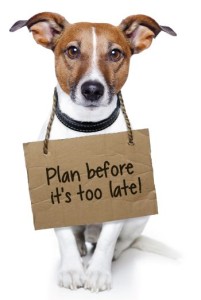Posts Tagged ‘disaster plan for pets’
Do You Have A Pet Preparedness Kit?
 In the last few years, the country has faced many natural disasters like Hurricanes Sandy and Irene, the tornadoes in Missouri and Oklahoma, and the wildfires in the western states. It is important to know that June marks National Pet Preparedness Month as a positive reminder for pet owners to proactively make preparations should they encounter a natural disaster.
In the last few years, the country has faced many natural disasters like Hurricanes Sandy and Irene, the tornadoes in Missouri and Oklahoma, and the wildfires in the western states. It is important to know that June marks National Pet Preparedness Month as a positive reminder for pet owners to proactively make preparations should they encounter a natural disaster.
Many of us consider the pets family so remembering to include your pet in disaster plans can reduce the potential dangers to the pets, their owners, and the first responders. Like humans, pets can become even more stressed or anxious at the onset of a severe weather event, which is why keeping pets calm during the evacuation process is a crucial component. By keeping them calm, this may make the evacuation smoother and reduce the chances of them being left behind or lost during the process.
To insure that your pets are safe during the emergency, it is best to make a plan for their evacuation and also prepare a disaster kit. By doing so, you are protecting the health of not only your pet, but yourself, your family and the first responders.
When making a plan, we must remember that disasters can happen without warning so we must be prepared for these events. This would include:
- Making sure that your pet is wearing a collar and tags with up-to-date information and other identification.
- Making sure that your pet is microchipped and that the microchip is registered in the database.
- Purchasing a carrier for each pet. The pets will be stressed and scared, so this will make transporting a lot easier, and lessen the risk of them getting lost.
- Keep a leash and/or carrier nearby the exit.
- Decide where you and your pet are going to stay.
In the wake of a disaster, the American Humane Associations recommends the following items to be included in a disaster kit. These would include:
- Food (your pet’s regular food)
- Water
- Leash and collar
- Bowls
- Photo of your pet/ID and a photo of you with your pet.
- Your pet’s medications
- Immunization/vet records
- Pet carrier
- First aid kit
- Contact list of pet-friendly hotels, veterinarians, American Red Cross, and out-of town friends or family.
Don’t wait until it is too late. Get started as soon as possible, because we do not know when a natural disaster is going to hit and then it may be too late. If you have any questions, please do not hesitate to contact our office so we can help you protect your furry family member.
